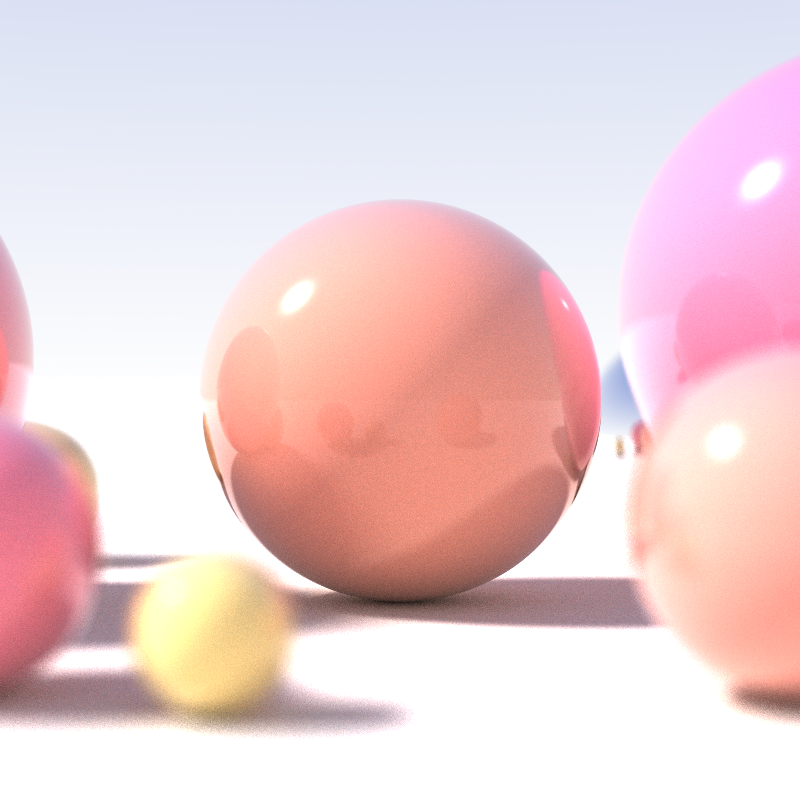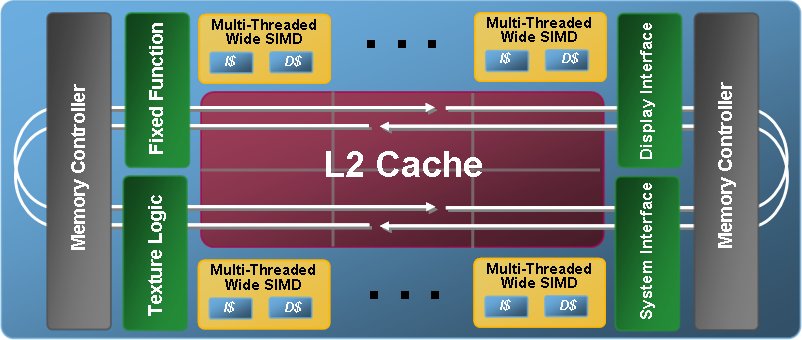|
Matt Pharr
Matt Pharr is a computer graphics researcher and author, and one of the primary originators of the physically based rendering process. His research focuses on rendering algorithms, graphics processing units, as well as scientific illustration and visualization. Education and academic work Pharr graduated with a B.S. in Computer Science from Yale University. He then went on to receive his Ph.D. from the Stanford University Graphics Lab, working under the supervision of Pat Hanrahan on rendering algorithms and systems. He has taught graduate level classes at Stanford, including Image Synthesis. Professional career Pharr joined Pixar's Rendering R&D group, working on the RenderMan Interface Specification and the RenderMan Shading Language. While at Pixar he was a Rendering Software Engineer for the films A Bug's Life and Toy Story 2. He then became a co-founder of Exluna, whose flagship product was Entropy, a RenderMan renderer based on BMRT. When Nvidia acquired Exluna and Entro ... [...More Info...] [...Related Items...] OR: [Wikipedia] [Google] [Baidu] |
Computer Graphics
Computer graphics deals with generating images with the aid of computers. Today, computer graphics is a core technology in digital photography, film, video games, cell phone and computer displays, and many specialized applications. A great deal of specialized hardware and software has been developed, with the displays of most devices being driven by graphics hardware, computer graphics hardware. It is a vast and recently developed area of computer science. The phrase was coined in 1960 by computer graphics researchers Verne Hudson and William Fetter of Boeing. It is often abbreviated as CG, or typically in the context of film as Computer-generated imagery, computer generated imagery (CGI). The non-artistic aspects of computer graphics are the subject of Computer graphics (computer science), computer science research. Some topics in computer graphics include user interface design, sprite (graphics), sprite graphics, Rendering (computer graphics), rendering, ray tracing (graphics) ... [...More Info...] [...Related Items...] OR: [Wikipedia] [Google] [Baidu] |
Blue Moon Rendering Tools
Blue Moon Rendering Tools, or BMRT, was one of the most famous RenderMan-compliant photorealistic rendering systems and was a precursor to NVIDIA's Gelato renderer. It was distributed as freeware. BMRT was a popular renderer with students and other people who were trying to learn the RenderMan interface. It also had some features PhotoRealistic RenderMan did not have at the time, for example, ray tracing, radiosity, volume rendering, and area lights. Even Pixar used BMRT for ray tracing before PRMan had such features. According to Exluna, it was used for 3D rendering in movies such as ''A Bug's Life'', ''Stuart Little'', ''The Cell'', ''Hollow Man'', and ''Woman on Top''. BMRT was originally developed by Larry Gritz while he was at Cornell University. He developed it during the early 1990s, first published it in 1994, and was subsequently hired by Pixar to work on their PhotoRealistic RenderMan product. The last version of the renderer under the BMRT name was 2.6, released in N ... [...More Info...] [...Related Items...] OR: [Wikipedia] [Google] [Baidu] |
Stanford University School Of Engineering Faculty
Stanford University, officially Leland Stanford Junior University, is a private research university in Stanford, California. The campus occupies , among the largest in the United States, and enrolls over 17,000 students. Stanford is considered among the most prestigious universities in the world. Stanford was founded in 1885 by Leland and Jane Stanford in memory of their only child, Leland Stanford Jr., who had died of typhoid fever at age 15 the previous year. Leland Stanford was a U.S. senator and former governor of California who made his fortune as a railroad tycoon. The school admitted its first students on October 1, 1891, as a coeducational and non-denominational institution. Stanford University struggled financially after the death of Leland Stanford in 1893 and again after much of the campus was damaged by the 1906 San Francisco earthquake. Following World War II, provost of Stanford Frederick Terman inspired and supported faculty and graduates' entrepreneurial ... [...More Info...] [...Related Items...] OR: [Wikipedia] [Google] [Baidu] |
Computer Graphics Professionals
A computer is a machine that can be programmed to carry out sequences of arithmetic or logical operations (computation) automatically. Modern digital electronic computers can perform generic sets of operations known as programs. These programs enable computers to perform a wide range of tasks. A computer system is a nominally complete computer that includes the hardware, operating system (main software), and peripheral equipment needed and used for full operation. This term may also refer to a group of computers that are linked and function together, such as a computer network or computer cluster. A broad range of industrial and consumer products use computers as control systems. Simple special-purpose devices like microwave ovens and remote controls are included, as are factory devices like industrial robots and computer-aided design, as well as general-purpose devices like personal computers and mobile devices like smartphones. Computers power the Internet, which links b ... [...More Info...] [...Related Items...] OR: [Wikipedia] [Google] [Baidu] |
Living People
Related categories * :Year of birth missing (living people) / :Year of birth unknown * :Date of birth missing (living people) / :Date of birth unknown * :Place of birth missing (living people) / :Place of birth unknown * :Year of death missing / :Year of death unknown * :Date of death missing / :Date of death unknown * :Place of death missing / :Place of death unknown * :Missing middle or first names See also * :Dead people * :Template:L, which generates this category or death years, and birth year and sort keys. : {{DEFAULTSORT:Living people 21st-century people People by status ... [...More Info...] [...Related Items...] OR: [Wikipedia] [Google] [Baidu] |
Academy Awards
The Academy Awards, better known as the Oscars, are awards for artistic and technical merit for the American and international film industry. The awards are regarded by many as the most prestigious, significant awards in the entertainment industry worldwide. Given annually by the Academy of Motion Picture Arts and Sciences (AMPAS), the awards are an international recognition of excellence in cinematic achievements, as assessed by the Academy's voting membership. The various category winners are awarded a copy of a golden statuette as a trophy, officially called the "Academy Award of Merit", although more commonly referred to by its nickname, the "Oscar". The statuette, depicting a knight rendered in the Art Deco style, was originally sculpted by Los Angeles artist George Stanley (sculptor), George Stanley from a design sketch by art director Cedric Gibbons. The 1st Academy Awards were held in 1929 at a private dinner hosted by Douglas Fairbanks in The Hollywood Roosevelt Hotel ... [...More Info...] [...Related Items...] OR: [Wikipedia] [Google] [Baidu] |
Artificial Neural Network
Artificial neural networks (ANNs), usually simply called neural networks (NNs) or neural nets, are computing systems inspired by the biological neural networks that constitute animal brains. An ANN is based on a collection of connected units or nodes called artificial neurons, which loosely model the neurons in a biological brain. Each connection, like the synapses in a biological brain, can transmit a signal to other neurons. An artificial neuron receives signals then processes them and can signal neurons connected to it. The "signal" at a connection is a real number, and the output of each neuron is computed by some non-linear function of the sum of its inputs. The connections are called ''edges''. Neurons and edges typically have a ''weight'' that adjusts as learning proceeds. The weight increases or decreases the strength of the signal at a connection. Neurons may have a threshold such that a signal is sent only if the aggregate signal crosses that threshold. Typically, ... [...More Info...] [...Related Items...] OR: [Wikipedia] [Google] [Baidu] |
Ray Tracing (graphics)
In 3D computer graphics, ray tracing is a technique for modeling light transport for use in a wide variety of rendering algorithms for generating digital images. On a spectrum of computational cost and visual fidelity, ray tracing-based rendering techniques, such as ray casting, recursive ray tracing, distribution ray tracing, photon mapping and path tracing, are generally slower and higher fidelity than scanline rendering methods. Thus, ray tracing was first deployed in applications where taking a relatively long time to render could be tolerated, such as in still computer-generated images, and film and television visual effects (VFX), but was less suited to real-time applications such as video games, where speed is critical in rendering each frame. Since 2018, however, hardware acceleration for real-time ray tracing has become standard on new commercial graphics cards, and graphics APIs have followed suit, allowing developers to use hybrid ray tracing and raste ... [...More Info...] [...Related Items...] OR: [Wikipedia] [Google] [Baidu] |
Real-time Computer Graphics
Real-time computer graphics or real-time rendering is the sub-field of computer graphics focused on producing and analyzing images in real time. The term can refer to anything from rendering an application's graphical user interface ( GUI) to real-time image analysis, but is most often used in reference to interactive 3D computer graphics, typically using a graphics processing unit (GPU). One example of this concept is a video game that rapidly renders changing 3D environments to produce an illusion of motion. Computers have been capable of generating 2D images such as simple lines, images and polygons in real time since their invention. However, quickly rendering detailed 3D objects is a daunting task for traditional Von Neumann architecture-based systems. An early workaround to this problem was the use of sprites, 2D images that could imitate 3D graphics. Different techniques for rendering now exist, such as ray-tracing and rasterization. Using these techniques and ad ... [...More Info...] [...Related Items...] OR: [Wikipedia] [Google] [Baidu] |
Google
Google LLC () is an American Multinational corporation, multinational technology company focusing on Search Engine, search engine technology, online advertising, cloud computing, software, computer software, quantum computing, e-commerce, artificial intelligence, and Computer hardware, consumer electronics. It has been referred to as "the most powerful company in the world" and one of the world's List of most valuable brands, most valuable brands due to its market dominance, data collection, and technological advantages in the area of artificial intelligence. Its parent company Alphabet Inc., Alphabet is considered one of the Big Tech, Big Five American information technology companies, alongside Amazon (company), Amazon, Apple Inc., Apple, Meta Platforms, Meta, and Microsoft. Google was founded on September 4, 1998, by Larry Page and Sergey Brin while they were Doctor of Philosophy, PhD students at Stanford University in California. Together they own about 14% of its publicl ... [...More Info...] [...Related Items...] OR: [Wikipedia] [Google] [Baidu] |
Larrabee (microarchitecture)
Larrabee is the codename for a cancelled GPGPU chip that Intel was developing separately from its current line of integrated graphics accelerators. It is named after either Mount Larrabee or Larrabee State Park in Whatcom County, Washington, near the town of Bellingham. The chip was to be released in 2010 as the core of a consumer 3D graphics card, but these plans were cancelled due to delays and disappointing early performance figures. The project to produce a GPU retail product directly from the Larrabee research project was terminated in May 2010 and its technology was passed on to the Xeon Phi. The Intel MIC multiprocessor architecture announced in 2010 inherited many design elements from the Larrabee project, but does not function as a graphics processing unit; the product is intended as a co-processor for high performance computing. Almost a decade later, on June 12, 2018; the idea of an Intel dedicated GPU was revived again with Intel's desire to create a discrete GPU b ... [...More Info...] [...Related Items...] OR: [Wikipedia] [Google] [Baidu] |







